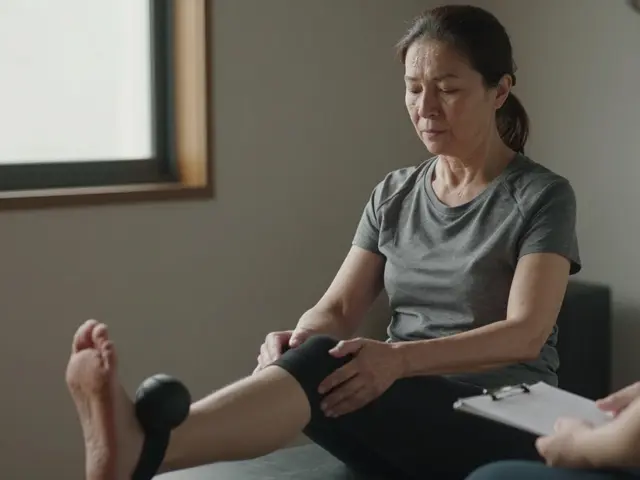COPD Inhalers: What They Are and Why You Need One
If you have chronic obstructive pulmonary disease (COPD), an inhaler is probably part of your daily routine. It’s a small device that delivers medicine straight into your lungs, helping you breathe easier when the air feels thin. Unlike pills, inhalers work fast because they go right where the action is – the airway walls.
Getting the right inhaler and using it correctly can mean the difference between struggling for breath and feeling in control. Below we break down the main inhaler families, share practical tips on handling them, and point out common mistakes that make the medicine less effective.
Types of COPD Inhalers You’ll See
Short‑acting bronchodilators (SABAs) – Think albuterol or levalbuterol. They open up airways within minutes and are perfect for sudden flare‑ups. Keep one handy in your bag or on the nightstand.
Long‑acting bronchodilators (LABAs) – Meds like formoterol stay active for 12 hours or more, smoothing out daily symptoms. They’re not a rescue tool; use them regularly as prescribed.
Inhaled corticosteroids (ICS) – These shrink airway inflammation over weeks. You’ll often pair an ICS with a LABA in one combo inhaler to cut down on pills.
Combination inhalers – Devices that bundle a LABA and an ICS (or even a LAMA, long‑acting muscarinic antagonist) simplify your regimen. One puff gives you both bronchodilation and anti‑inflammation.
How to Use Your COPD Inhaler the Right Way
First, read the instruction leaflet – it’s short and worth the time. Then follow these steps for most metered‑dose inhalers (MDIs):
- Shake the inhaler well for a few seconds.
- Exhale fully, emptying your lungs.
- Place the mouthpiece between your teeth, seal your lips around it, and keep your tongue out of the way.
- Press down on the canister once while starting to inhale slowly (about one second).
- Continue breathing in gently for another two seconds, then hold your breath for 5‑10 seconds.
- If you need a second puff, wait about 30 seconds and repeat.
Dry powder inhalers (DPIs) work a bit differently: you don’t press a canister; instead you load a dose, breathe in fast and deep, then hold for a moment. Always keep DPIs dry – moisture ruins the powder.
A few quick tips to boost effectiveness:
- Rinse your mouth after using a steroid inhaler – it cuts down on sore throat and fungal growth.
- Replace the canister when you feel less spray or notice a change in taste.
- Store inhalers at room temperature, away from direct heat.
If your inhaler feels stuck, give it a gentle tap on a hard surface; this often frees the valve. And never share inhalers – they’re personal medical devices.
Finally, keep an eye on your symptoms. If you need to use your rescue inhaler more than twice a week or you feel short of breath even after regular doses, call your doctor. Adjusting the medication plan early can prevent hospital trips.
With the right inhaler choice and solid technique, managing COPD becomes less of a daily battle and more of a routine you’ve got under control.

Breztri vs Symbicort: Detailed COPD Inhaler Comparison & What Patients Need to Know
Not sure whether Breztri or Symbicort is your best bet for managing COPD? This article breaks down exactly what’s in each inhaler, how their dosing schedules differ, and what you can expect when it comes to cost. We even touch on real-world tips, hidden price facts, and where you can find alternatives if neither option feels right. If you want to make an informed move for your lungs, you're in the right place.
read more




